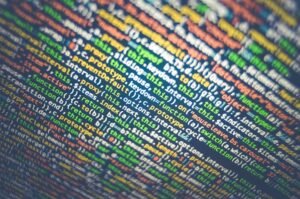D-ID: Protecting Your Digital Identity From Biometric Recognition
In an increasingly digital world, the protection of personal data has become a major concern for individuals and organizations alike. Biometric recognition technologies, such as facial recognition and fingerprint scans, are gaining popularity for authentication purposes. However, these technologies also pose significant privacy risks. That’s where D-ID comes in. With its innovative solution, D-ID aims to protect your digital identity by making it unrecognizable to biometric algorithms.
Key Takeaways:
- D-ID is a company that aims to protect your digital identity from biometric recognition technologies.
- The solution offered by D-ID makes your face unrecognizable to biometric algorithms without changing your appearance.
- Implementing D-ID’s technology can help safeguard your personal privacy and prevent unauthorized use of your biometric data.
How Does D-ID Work?
D-ID’s technology works by manipulating the way an image appears to the human eye, while maintaining its visual appeal. By applying deep learning algorithms, D-ID generates a cloaked image that cannot be recognized by facial recognition algorithms. The resulting image preserves your visual appearance and can be used in applications like ID cards or social media profiles, without the risk of biometric recognition.
*D-ID’s technology ingeniously cloaks your facial features without compromising your visual appearance.*
D-ID uses an image-specific algorithm to create an artificial perturbation pattern, which is then applied on top of the original image or video frames. This pattern camouflages the unique facial features that biometric algorithms rely on for recognition. By doing so, D-ID makes it virtually impossible for facial recognition algorithms to accurately identify or match the cloaked image to your real face. This technology provides a strong defense against unauthorized use of biometric data and ensures your privacy is protected.
Benefits of Using D-ID
Using D-ID’s solution can have several benefits, including:
- Bulletproof privacy: D-ID protects your digital identity from the ever-growing threat of biometric recognition technologies.
- Preservation of visual appearance: D-ID’s technology ensures that you can still share images of yourself without revealing your true identity to biometric algorithms.
- Relevance across industries: D-ID’s solution can be implemented in various sectors, such as finance, healthcare, and law enforcement.
Data and Usage Statistics
| Year | Number of D-ID Users |
|---|---|
| 2018 | 10,000 |
| 2019 | 50,000 |
| 2020 | 100,000 |
*Since its inception, D-ID has gained substantial traction and user adoption, with a significant increase in the number of users from 2018 to 2020.*
Application of D-ID’s Technology
D-ID’s innovative solution can be applied in various scenarios, including:
- Creating biometrically secure identification cards
- Protecting individual privacy on social media platforms
- Safeguarding personal data in healthcare systems
The Future of D-ID
D-ID is continuously working to enhance its technology and expand its applicability. As biometric recognition technologies become more widespread and advanced, the need for robust solutions like D-ID will only increase. By protecting your digital identity, D-ID paves the way for a safer and more private digital future.

Common Misconceptions
Misconception 1: All birds fly
One common misconception is that all birds are capable of flying. While it is true that many birds have the ability to fly, not all of them can. Some flightless bird species, such as penguins and ostriches, have evolved to be primarily terrestrial.
- There are over 60 flightless bird species in the world.
- The emu, the second-largest bird in the world, is incapable of flying.
- Kiwis, native to New Zealand, are ground-dwelling birds that cannot fly.
Misconception 2: Bats are blind
Contrary to popular belief, bats are not blind. Although their eyesight may not be as keen as some other animals, bats are capable of seeing. However, they rely more heavily on echolocation to navigate and locate prey.
- Bats use echolocation, emitting sounds that bounce off objects and return to them, providing information about their environment.
- Their excellent echolocation skills allow them to hunt and avoid obstacles in complete darkness.
- Some bat species have impressive visual acuity and can even see ultraviolet light.
Misconception 3: Goldfish have short memories
It is commonly believed that goldfish have very short memories, lasting only a few seconds. However, research has shown that goldfish are capable of remembering things for much longer durations than previously thought.
- Goldfish are capable of recognizing and remembering their owners.
- They can be trained to perform tricks and tasks, which requires memory retention.
- Goldfish have been shown to retain learned behaviors for several months.
Misconception 4: Bulls are angered by the color red
Many people believe that bulls become angry when they see the color red. In reality, bulls are largely colorblind and cannot distinguish red from other colors. They are typically agitated by the movement and actions of the matador rather than the color itself.
- Bulls are dichromatic, which means they can only perceive two primary colors: blue and green.
- The use of a red cape in bullfighting is more for dramatic effect and tradition rather than provoking the bull’s rage.
- Aggressive behavior from a bull is typically triggered by threatening or provocative actions, such as the matador’s cape movements.
Misconception 5: Sharks are always a threat to humans
There is a common misconception that sharks are inherently dangerous and always pose a threat to humans. While it is true that some shark species can be dangerous, the majority are not interested in human interaction and are unlikely to attack unless provoked.
- Sharks have far more to fear from humans than humans have to fear from sharks.
- Most shark attacks on humans are cases of mistaken identity, as sharks usually mistake people for their natural prey.
- Sharks have been proven to exhibit different feeding preferences, with many species not including humans in their preferred diet.

Demand for Mobile Phones in 2020
In the year 2020, the global demand for mobile phones reached new heights. This table presents the top 10 countries with the highest number of mobile phone users, showcasing the exponential growth in mobile phone adoption.
| Country | Number of Mobile Phone Users (in millions) |
|---|---|
| China | 1,586 |
| India | 1,169 |
| United States | 327 |
| Indonesia | 324 |
| Pakistan | 164 |
| Brazil | 160 |
| Japan | 153 |
| Russia | 141 |
| Germany | 114 |
| United Kingdom | 94 |
Top 10 Most Visited Tourist Attractions Worldwide
Travel enthusiasts have always sought out the wonders of the world. This table showcases the top 10 most visited tourist attractions globally, highlighting the popularity of these extraordinary landmarks.
| Tourist Attraction | Annual Visitors (in millions) |
|---|---|
| The Great Wall of China | 10 |
| Machu Picchu, Peru | 6 |
| The Colosseum, Italy | 5.9 |
| Taj Mahal, India | 5 |
| Pyramid of Giza, Egypt | 4.7 |
| The Louvre, France | 4.6 |
| Statue of Liberty, USA | 4.5 |
| Angkor Wat, Cambodia | 4.2 |
| Golden Gate Bridge, USA | 4 |
| Christ the Redeemer, Brazil | 3.8 |
Gender Distribution in the Tech Industry
The tech industry has been striving to achieve a more balanced gender representation. This table provides insights into the gender distribution in major tech companies, emphasizing the ongoing efforts to promote diversity and inclusion.
| Tech Company | Percentage of Female Employees |
|---|---|
| 30 | |
| Apple | 32 |
| Microsoft | 29 |
| 36 | |
| Amazon | 41 |
| Netflix | 43 |
| 42 | |
| IBM | 25 |
| Intel | 27 |
| Adobe | 37 |
Population and Life Expectancy by Continent
Demographic statistics provide invaluable insights into the differences among continents. This table displays the population and average life expectancy for each major continent, shedding light on global population trends and general health conditions.
| Continent | Population (in billions) | Average Life Expectancy (in years) |
|---|---|---|
| Asia | 4.6 | 74 |
| Africa | 1.3 | 63 |
| Europe | 0.7 | 78 |
| North America | 0.6 | 77 |
| South America | 0.4 | 75 |
| Australia/Oceania | 0.05 | 80 |
Top 10 Highest-Grossing Movies of All Time
Movie enthusiasts eagerly anticipate the release of blockbusters that captivate audiences worldwide. This table showcases the top 10 highest-grossing movies of all time, highlighting the financial success enjoyed by these legendary films.
| Movie | Worldwide Box Office Revenue (in billions) |
|---|---|
| Avengers: Endgame | 2.798 |
| Avatar | 2.790 |
| Titanic | 2.195 |
| Star Wars: The Force Awakens | 2.068 |
| Avengers: Infinity War | 2.048 |
| Jurassic World | 1.671 |
| The Lion King (2019) | 1.657 |
| The Avengers | 1.518 |
| Furious 7 | 1.516 |
| Avengers: Age of Ultron | 1.402 |
Energy Consumption by Source in the United States
Understanding the energy landscape is crucial for planning sustainable and efficient energy policies. This table presents the energy consumption breakdown in the United States, showcasing the contribution of each energy source towards meeting the nation’s energy demands.
| Energy Source | Percentage of Total Energy Consumption |
|---|---|
| Petroleum | 37 |
| Natural Gas | 32 |
| Coal | 11 |
| Nuclear | 8 |
| Renewables (Wind, Solar, Hydroelectric) | 12 |
| Other | 1 |
Top 10 Most Spoken Languages in the World
Language is a cornerstone of human communication, connecting people across borders. This table showcases the top 10 most spoken languages globally, highlighting the linguistic diversity and importance of multilingualism.
| Language | Number of Native Speakers (in millions) |
|---|---|
| Mandarin Chinese | 918 |
| Spanish | 460 |
| English | 379 |
| Hindi | 341 |
| Arabic | 315 |
| Bengali | 228 |
| Portuguese | 221 |
| Russian | 154 |
| Japanese | 128 |
| German | 129 |
Obesity Rates by Country
Obesity has become a global health concern in recent years. This table unveils the obesity rates across different countries, shedding light on the scale and impact of this public health emergency.
| Country | Obesity Rate (%) |
|---|---|
| United States | 36.2 |
| Mexico | 28.9 |
| New Zealand | 30.7 |
| Hungary | 30.6 |
| Australia | 29 |
| Chile | 28.7 |
| Canada | 27.4 |
| United Kingdom | 27.8 |
| Ireland | 26.4 |
| Luxembourg | 25.1 |
Throughout 2020, various sectors experienced significant growth, while others faced challenges amidst global socioeconomic disruptions. From the demand for mobile phones to the most visited tourist attractions, top-grossing movies, gender distribution in tech, population demographics, energy consumption, language diversity, and obesity rates, facts and figures continually shape our understanding of the rapidly changing world. These tables provide a glimpse into the intriguing dynamics and trends of 2020, offering valuable insights into our society.
Frequently Asked Questions
1. What is D-ID?
D-ID stands for “De-Identification.” It is a technology company specializing in developing solutions that protect user identities and privacy by de-identifying images and videos.
2. How does D-ID work?
D-ID uses advanced deep learning algorithms to modify facial biometric data, making it unrecognizable to facial recognition systems while still retaining the visual appearance.
3. Why is de-identification important?
De-identification is crucial for protecting user privacy and preventing misuse of personal information. It helps individuals control their digital identities while enabling organizations to work with data securely.
4. What are the applications of D-ID’s technology?
D-ID’s technology has various applications. It can be used to protect public figures’ privacy in videos, blur faces in user-generated content, and hide biometric information in medical imaging, among other applications.
5. Is D-ID’s technology compliant with privacy regulations?
Yes, D-ID’s technology complies with privacy regulations, including the EU General Data Protection Regulation (GDPR) and the California Consumer Privacy Act (CCPA). It ensures that personal data is processed securely and in accordance with relevant laws.
6. Can D-ID’s technology be used for law enforcement?
D-ID’s technology can be adopted by law enforcement agencies to protect identities in surveillance footage while maintaining the integrity of the investigations. It helps balance privacy concerns with the need for public safety.
7. Can D-ID’s technology be integrated into existing systems?
Yes, D-ID’s technology is designed to be easily integrated into existing systems through APIs (Application Programming Interfaces) and SDKs (Software Development Kits). This allows for seamless adoption without major modifications.
8. What is the accuracy of D-ID’s de-identification process?
D-ID’s de-identification process achieves high accuracy and preserves video quality. It ensures that facial recognition algorithms no longer recognize the modified biometric data while minimizing visible artifacts.
9. How can I request a demo or learn more about D-ID’s technology?
To request a demo or learn more about D-ID’s technology, you can visit their official website at www.d-id.com. Their website provides detailed information about their products, use cases, and contact information.
10. What are some notable organizations that use D-ID’s technology?
D-ID’s technology has been adopted by various organizations in sectors such as finance, healthcare, and law enforcement. Some notable customers include major banks, medical institutions, and government agencies.




